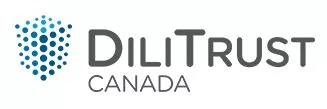The world has come so far in terms of technological advancements.
As the world continues to shift towards digitization, questions of what-ifs are also slowly moving to when's.
A few clicks or touches on a screen can now do the once taxing task of delivering, receiving, and sharing information. Through ease of use, organizations are going digital to streamline communication. It is no longer a question of when they will start the streamlining process. Instead, the only question remaining is when they will complete the process.
Digital transformation is changing how businesses operate. To stay abreast of the ever-competitive business landscape, companies must use ultramodern technologies such as cloud-based systems, artificial intelligence, and complex data analytics software to streamline business processes.
Among the latest innovations of the ongoing digital transformation is the digital boardroom. Adopting a digital boardroom can help directors and board members engage with management teams to simplify change management efforts.
The Digital Boardroom
The emergence of the digital era signified the norm is shifting away from the modern office space that accommodates hundreds of employees. Instead, employees work from their homes, or anywhere their laptops, mobile phones, tablets, or virtual devices allow them to access the Internet.
With the plethora of resources available, the way people access and absorb information and communicate with other people has changed. People are now only a few clicks away from getting information on a particular topic through video tutorials, webinars, podcasts, articles, ect.
People can also now form a network of like-minded individuals with relative ease.
A digital boardroom, such as the Board Portal module of the DiliTrust Governance suite, allows board members to carry out essential board meeting tasks remotely. This includes preparing meeting notes, carrying out polls and surveys, and distributing documents. This boardroom era allows for greater mobility and flexibility for board members, and also allows for greater communication and collaboration.
The Board's Role
How Is Digital Transformation Affecting What Board Members Do?
Since the beginning, the board has always assumed supervisorial and stewardship functions. Assuming the role of a supervisor, board members primarily take responsibility for CEO appointments, approving organizational and change management strategies and their implementation, and inspect an organization's risk and compliance. Board members are also assigned with the responsibility of paving the organization's future direction.
This role encompasses advising on investment areas, driving the organization towards more significant innovation, responding to the ever-changing geopolitical and technological landscape, and harnessing organizational talent and culture.
However, new and emerging technologies have added layers of complexities to board members' roles in management responsibilities.
While The National Association of Corporate Directors (NACD) urged board members and directors always to think ahead, many board members and directors still find themselves in great turmoil. Although the new and emerging technologies have changed the business landscape, an unfortunate consequence is that digital transformation has blurred the line defining the roles of board members and directors. Although there is no clear-cut answer to this issue, a change in management efforts may get undertaken to find a compromise elucidating the organizational structure.
Digital Communication and Information Exchange
Although the digital transformation has facilitated the opening of new and improved communication channels, it has also caused adverse impacts on people whose jobs are dependent on communication and information exchange, such as board members. Although there is yet a clear-cut definition setting limitation on the functions of digital channels and board members, change management efforts may help rid the worries and alleviate the turmoil that board members are currently experiencing. Depending on the reference viewpoint, digital transformation may be both a blessing and a curse.
The Advantages and Challenges of Board Portals
The new and emerging technologies brought about by the digital transformation have led to the adoption of board portals as the new mode of board communications.
Board portals are designed to support the accessible communication and sharing of documents among board members and management teams.
The adoption of board portals has overcome the challenges of old-school paper-based communications and even former electronic document-sharing mechanisms. Board members and directors can find all the documents they need in one single space with board portals, thereby avoiding running the risks of losing papers and tracking multiple communication channels.
However, board portals are not without risks or challenges. For one, board portal applications may vary in terms of features and functionality. Meaning documents and sensitive information may only be accessible on some devices and not on others. This issue most affects board members and directors who oversee multiple board portals. Utilizing several board portals with different features and functionality may force board members and directors to manage more than one device. Furthermore, since the organization and presentation of data are not standardized across various board portals, board members and directors must devote more time to grasp each portals' features and functionality. You can resolve these issues by choosing a comprehensive board portal application, such as the Board Portal module of the DiliTrust Governance suite to support all major devices.
And, as always, make sure to look into the security of any board portal application you intend on using. DiliTrust prides itself on providing the most secure virtual board portal application with ISO 27001 certification, the highest international standard for IT security.
As board portals are still a developing innovation of the recent digital transformation, they are constantly evolving. Although the digital transformation has been instrumental in turning what-ifs into what is, board members find themselves in a state of confusion as their jobs overlap with the functions of the latest technological developments. Although a compromise is yet to define and set specific functions, change management efforts are essential to keep a healthy line of communication while traversing a relatively new space.
The content of this article is intended to provide a general guide to the subject matter. Specialist advice should be sought about your specific circumstances.


